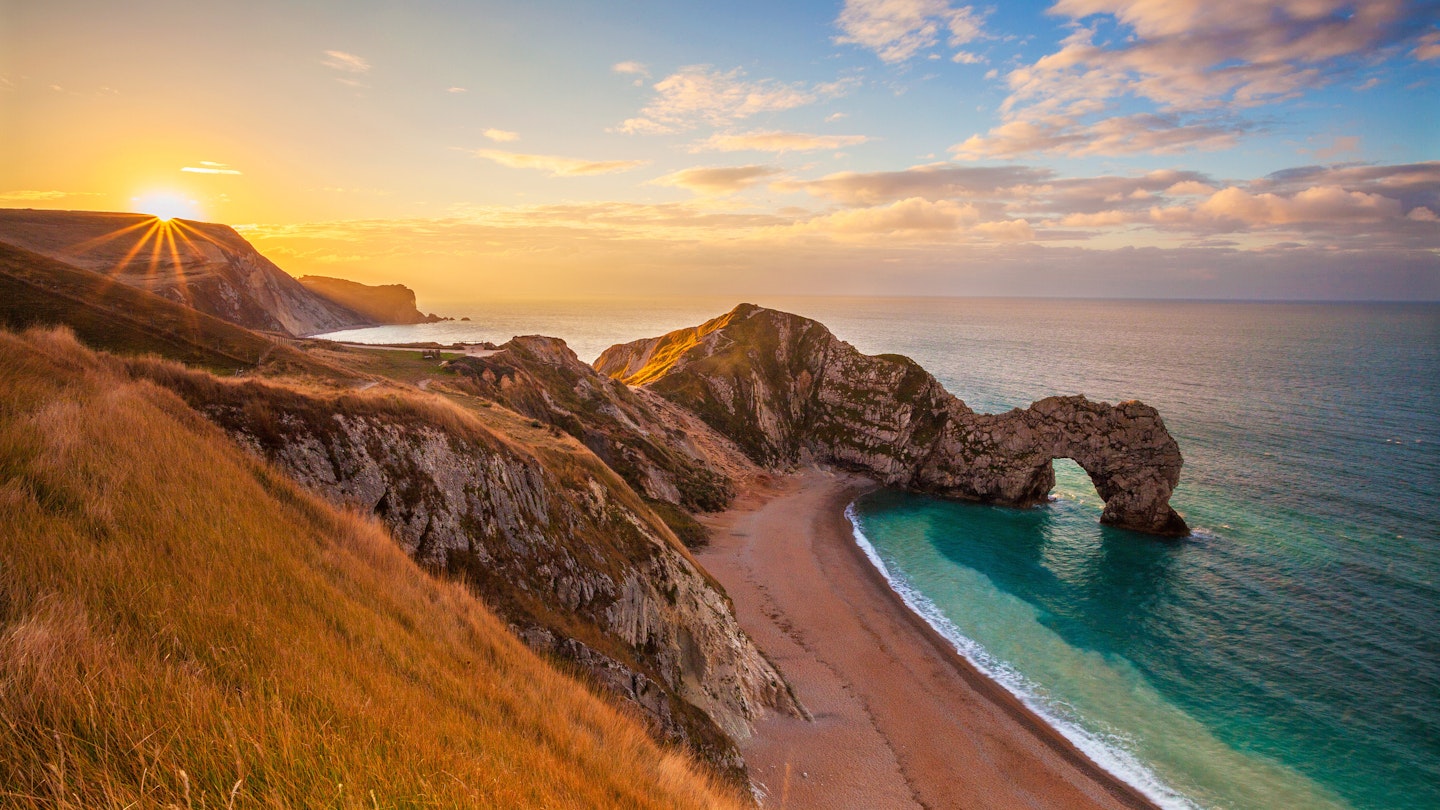
When the movie Ammonite goes on widespread release later this year, it is bound to spark interest in the . This historical drama, premiering at the Toronto International Film Festival in September, is set in the early 1800s and showcases filming locations across .

The film features Kate Winslet as paleontologist Mary Anning, who brings a young woman named Charlotte Murchison (played by Saoirse Ronan) on fossil-hunting adventures. As they explore the beaches of Lyme Regis and surrounding areas, they search for fossils. Notably, the region’s dark-clay Jurassic cliffs, which are 190 million years old, contribute to its rich fossil deposits. The majority of the filming occurred in Lyme Regis, while other scenes were captured at Eype Beach and Charmouth Beach.
Exploring the Jurassic Coast
The Jurassic Coast, a UNESCO World Heritage Site since 2001, stretches from Orcombe Point in Exmouth, Devon, to Old Harry Rocks near Swanage, Dorset. This incredible stretch covers 95 miles and features four unique geographic zones:
- East Devon
- West Dorset
- Weymouth & Portland
- Purbeck
Each region hosts its own towns, villages, and breathtaking natural landscapes. Consequently, the Jurassic Coast is celebrated for its extraordinary geological significance, including the variety of rocks, fossils, and landforms it encompasses.

The geologic formation of this area began with layers of rocks shaped by diverse climates over millions of years. Significant earth movements then tilted these rock layers, shifting the oldest formations westward and the youngest eastward. Erosion has further exposed the distinct strata, revealing Devon’s rusty-red Triassic rocks, which are between 200 and 250 million years old. Additionally, the creamy-colored Cretaceous rocks, dating between 65 and 140 million years, are found at Lulworth Cove, showcasing beautiful formations including bays, stacks, and rock arches. For further details, visit the Jurassic Coast’s website here.




